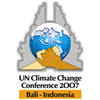The Protocol was drawn up in Kyoto, Japan in 1997 to implement the United Nations Framework Convention for Climate Change
Industrialised nations who sign up to the treaty are legally bound to reduce worldwide emissions of six greenhouse gases (collectively) by an average of 5.2% below their 1990 levels by the period 2008-2012.
For the protocol to come fully into force, the pact needed to be ratified by countries accounting for at least 55% of 1990 carbon dioxide emissions. With countries like the US and Australia unwilling to join the pact, the key to ratification came when Russia, which accounted for 17% of 1990 emissions, signed up to the agreement on 5th November 2004.
The final ratified agreement means Kyoto will receive support from participating countries that emit 61.6% of carbon dioxide emissions. The protocol is officially the first global legally binding contract to reduce greenhouse gases.
The Protocol has taken seven years to come into force because many countries felt that it did not highlight the all-important rules of how the nations would operate. 180 nations agreed on a scaled down version of the treaty in 2001. Many were reluctant to ratify until having a better understanding of the treaty. 141 parties have now ratified the agreement.
Now the agreement is law, if any of the participating countries exceed their proposed 2012 target, they will then have to make the promised reductions from the 2012 target and an additional 30% more in the next period. The EU and Japan have already promised to reduce to pollution by 8% from their respective 1990 levels.
Individually, each country has developed its own method to meet its targets. The EU has setup a market by which 12,000 factories and power stations are given a carbon dioxide quota. If they exceed this amount they can purchase extra allowances or pay a financial penalty. If they fall below the amount they can sell on the extra quota.
There are still, parties who won't sign up to the agreement. The US, the world’s largest greenhouse gas polluter, says signing up would ruin the US economy and the pact wrongly disregards developing countries.
Australia, which has a large coal industry, supports the US view and has also opted out. The Australian government has instead developed its own scheme called "The National Greenhouse Strategy". This will attempt to reduce emissions by only 10.1% by 2012, which is an 8% increase on 1990 levels.
Most of the countries in the pact agree that it will be a difficult task to meet their Kyoto targets; already nations are falling behind their targets. Spain and Portugal in the EU were 40.5% above 1990 levels in 2002. Canada, one of the first countries to sign, has increased emissions by 20% since 1990, and they have no clear plan to reach their target. Japan is also uncertain about how it will reach its 6% target by 2012.
See the latest progress on Kyoto targets, as well as news and events at the UNFCCC website.
(The BBC is not responsible for the content of external websites)






No comments:
Post a Comment